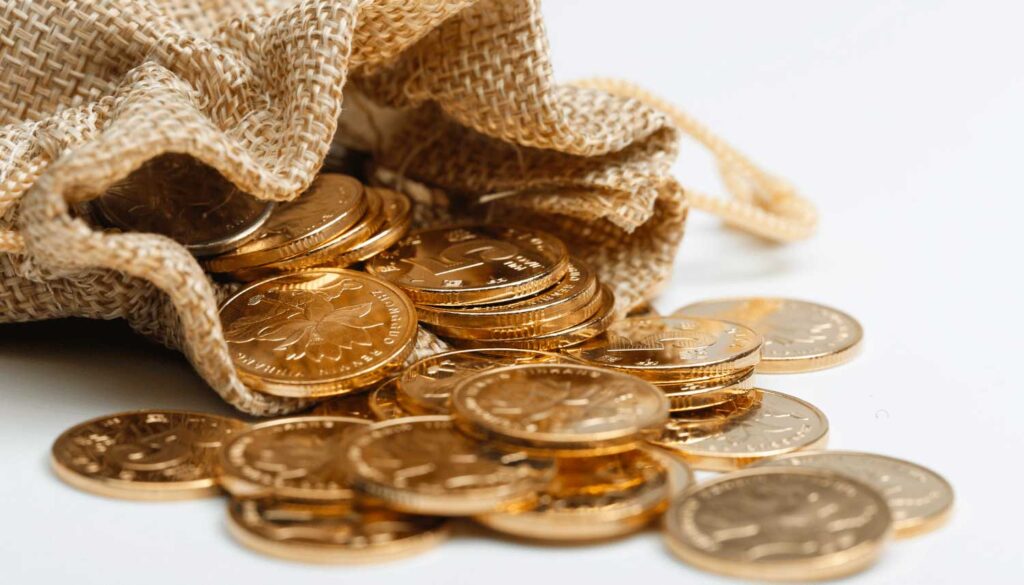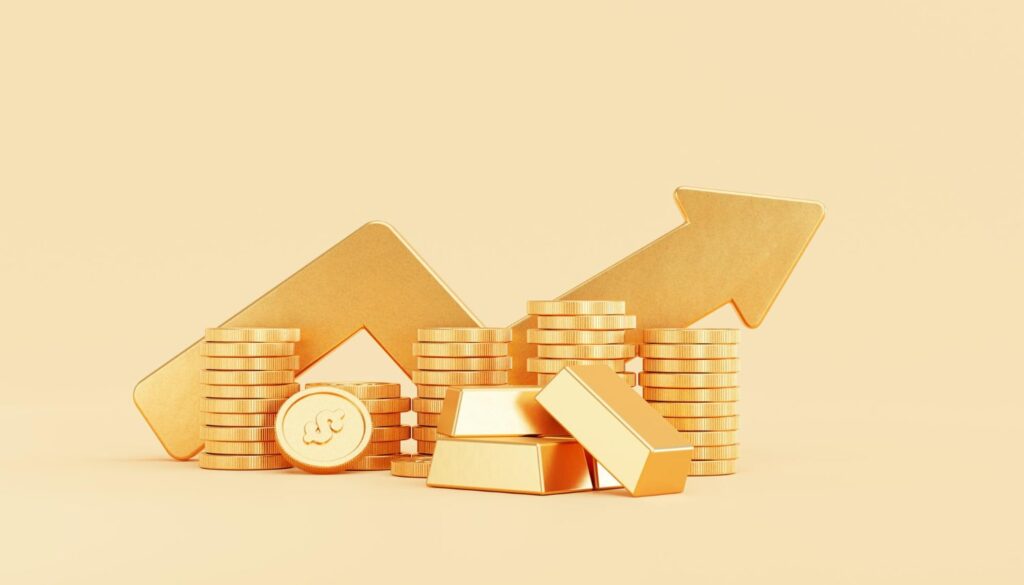Many individuals are perplexed about the current low gold prices especially with all the madness in the world. It just doesn’t make sense.
While the U.S Federal Reserve (Fed) has backed off from printing money, the other major central banks continue to print. While sovereign debt around the wold continues to explode, most countries still have stagnant growth. The quantitative easing experiment has failed to stimulate any economy but has pushed prices of equities, bonds and property artificially high, just as Bernanke said it would, giving many individuals the illusion of greater wealth. But, this has only benefited the small minority of people on this planet, while the majority has suffered from an enormous transfer of wealth.
This massive transfer of wealth has been caused by the major central banks that have dropped interest rates to record lows and in some cases to negative, thus penalising the savers and favouring the speculator.
And, geopolitical tensions and domestic unrest are increasing almost daily.
In such an environment owning some gold and silver makes a lot of sense.
Although, investors around the world use gold as a store of wealth, and many believe it’s superior to any and all paper currencies, the gold price is currently languishing well below its 2011 peak of nearly $1,900 per ounce. It took a steep dive midway through 2013, reaching about the $1,250 mark, and then dropped below $1,200 at the start of 2014. Since then, it’s continued to fall, and in November 2015 was trading just below $1,100.
Investor sentiment regarding gold is very low at the moment and traders remain fixated on the possible interest rate hike from the Fed. Yet, demand for physical gold remains extremely strong from Asian countries in particular China and Russia.
Many investors saw the lower gold price as a reason for some gold mines to close. However, as yet most gold producers have opted to cut costs rather than shut down their operations entirely.
Miners have taken diverse approaches to making such cost reductions, including lowering salaries and reducing employees. But perhaps the most common approach has been to cut down on exploration. Many gold miners are directing all their money at their existing operations rather than searching for gold elsewhere. While that’s not a problem just yet, many market watchers believe that ultimately gold may be in short supply.
While supply and demand are key factors in the gold market, it’s important for investors to be aware that they’re not the only things that can have an impact on the metal.
Although, Ben Bernanke would disagree, gold is a monetary metal whose price is determined by inflation, by fluctuations in the dollar and U.S. stocks, by currency-related crises, interest rate volatility and international tensions, and by increases or decreases in the prices of other commodities. The price of gold reacts to supply and demand changes and can be influenced by consumer spending and overall levels of affluence.
Gold is different from other precious metals such as platinum, palladium and silver because the demand for these precious metals arises principally from their industrial applications. Gold’s value does not arise from its usefulness in industrial or consumable applications. It arises from its use and worldwide acceptance as a store of value. Gold is money.
To illustrate this point, lets’ take a look at the price of gold, the South African rand, the US dollar and the Krugerrand since 1980.
After the big run up in prices in January 1980, the price of gold drifted lower and in March 1980 the average price of gold was around USD 600 per ounce. At the same time, believe it or not the South African rand was exceptionally strong and one dollar only bought around 0.70 cents South African. Can you believe this? Now it buys more than 14 rand. At the same time, the price of a Krugerrand was around ZAR 550 each.
Now, if in 1980, you chose to buy physical gold bullion, today, your gold is worth USD 1060 an ounce. If on the other hand you chose to hold South African rands and simply stored them under your mattress, all you would have is still Rand 550. But, the purchasing power over the years has been greatly diminished. In 1980 you could have rented a two bedroom apartment in a good suburb for that amount…not today!
If you had bought US dollars, at the time you would have received around $620. Today, those dollars are worth around R9000. But, if you had gone with the Krugerrand at around R550, today that coin is worth around R16,000!
During the last year, many traders have focused on interest rates. Expectations have been running high that the US Federal Reserve will raise interest rates after keeping them low for the better part of a decade. While that hasn’t happened yet, many believe that the central bank will take that step at its next meeting, which is scheduled for December 15 to 16.
Price manipulation has also been a concern in the gold space, but luckily, it’s one that the world’s gold market participants are keen to address. However, most of the price suppression occurs on the Comex, which has no interest whatsoever to investigate this.
For most financial transactions today, gold is irrelevant. Wall Street can carry on quite happily without ever even thinking about gold. But, many individual including myself, believe in precious metals.
In an interview in 2014, JimRogers, billionaire and cofounder of the Soros Quantum Fund, publicly said he thinks there is going to be financial chaos over the next decade: “It could be a monetary disaster or even war. This turmoil could come from a gigantic debt problem, for instance, which could cause world economies to fall apart as well. Politicians don’t know what to do besides printing money—so that’s what they end up doing. We will see a wave of turmoil from all this that will surely take gold higher.” He confirmed he hadn’t been selling any of his gold.
Peter Schiff, founder and CEO of Euro Pacific Capital, confirmed his unwavering confidence in a very bullish outlook for the yellow metal: “Gold is going to go to $5,000 … I’ve had that target in mind for some time … Normally markets take the stairs up and the elevator down. Well, I think that gold is going to take a rocket ship back up.”
Marc Faber reminds us that while gold has been a miserable performer since 2011, it’s up more than four times since the late 1990: “Gold hasn’t done that badly, it has done actually better than stocks … I’m not a prophet, but I’m telling you I want to own some gold because I don’t trust the financial system anymore.”
Jim Rickards, economist and best-selling author of Currency Wars, says that his target price for gold is in the range of $7,000 to $9,000 per ounce: “That’s not something that will happen straightaway, but it’s not a 10-year forecast either. It’s a three- to five-year forecast, for the price to rise by about five to six times.” According to Rickards, there are two means to restore confidence: You flood the world with liquidity (highly inflationary), or you return to a gold standard. ”I’ve done the math on that and the non-deflationary price for a gold standard today is about $9,000 per ounce.”
As I have stated countless times, it is essential to own gold as a form of insurance against government and central bank madness.If you live in South Africa and think the government are doing things in your best interest, think again.
In South Africa, the Auditor General has reported that there has been irregular expenditure of R25.7-billion across the country’s national and provincial departments and public entities for the 2014-2015 year. .
If there is a silver lining to his office’s general report on national and provincial audit outcomes, it’s that irregular expenditure decreased by 27% from the previous year’s figure of R35.28-billion.
The report covers 468 auditees, which include 167 national and provincial departments and 301 public entities with a total budget of R1.1-trillion for the year under review.
Some of the biggest culprits were the Gauteng transport department with R1.9-billion, the Gauteng human settlements department with R1.9-billion, the Mpumalanga health department with R1.9-billion, the South African National Roads Agency with R1.6-billion and the Gauteng education department with R1.7-billion.
Ask yourself. What benefit do I get by being a tax payer? (If the electorate consisted only of tax payers and not the ignorant masses, there would be a different story to tell.)
The U.S. and many other Western countries have national debts, deficits and entitlement spending that is out of control. Their positions are unsustainable. This, in turn, encourages central banks to behave recklessly, putting world markets — and your money — in very real danger. So the question you have to ask yourself, once again— as you think about your investments and savings — is this: Do I trust my government to keep my money safe? If not, then you’ll want to put a proportion of your wealth into gold and silver bullion.
In a world where the future supply of gold is uncertain, and where governments and central banks are behaving recklessly … there is a very real possibility that gold prices will go up dramatically over the next few years.
Gold is like no other asset class. Gold has no counterparty risk. If you hold physical gold, you don’t need another party to make good on a contract or promise. This is not the case with stocks and bonds and virtually every other investment.
If you own gold, you can rest assured that it will always have value at any time in the future. And, as illustrated in my example above, over the long-term, gold will maintain its purchasing power. One ounce of gold will buy as much goods and services today as it did years ago.
History has shown us that every single fiat currency has eventually collapsed. And, when this has happened, barter systems have always emerged. Gold and silver make perfect barter, accepted by most around the world.
In a dollar collapse, the price of items won’t mean much. Prices will increase rapidly. But, in such an event, individuals holding gold and silver will determine their metal’s value and decide what change to expect, not merchants.
While the gold price may be lower than investors would like, it’s clear that interest in the metal remains strong around the world. Those interested in investing in gold would do well to remember that like most markets, the gold sector is cyclical, meaning that what goes down must eventually rise again.
David Levensterin–Investing.com December 2, 2015






